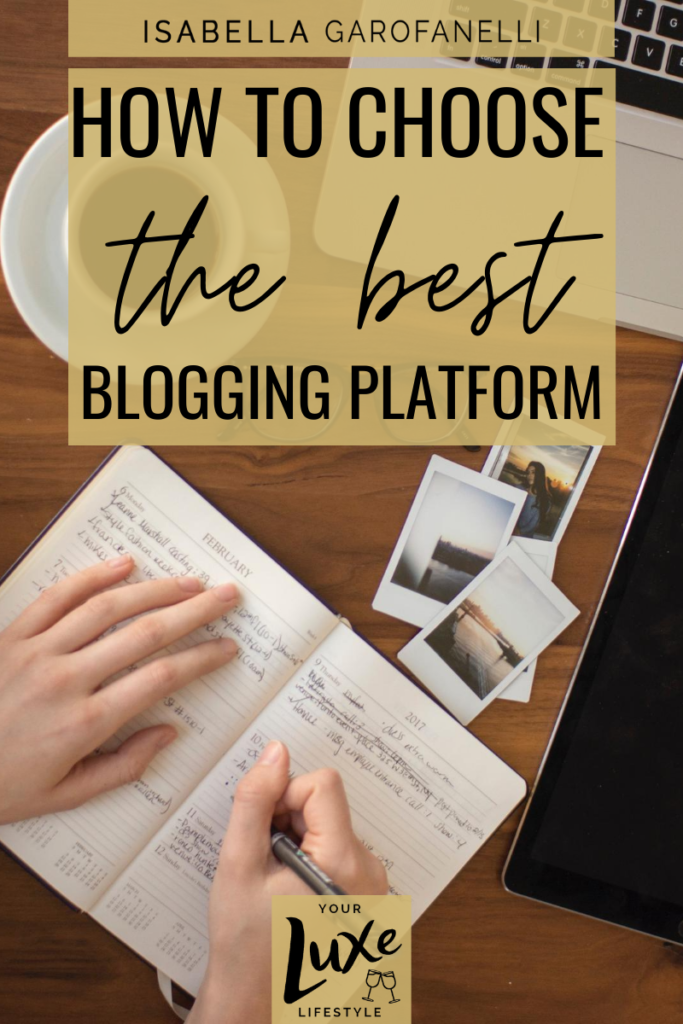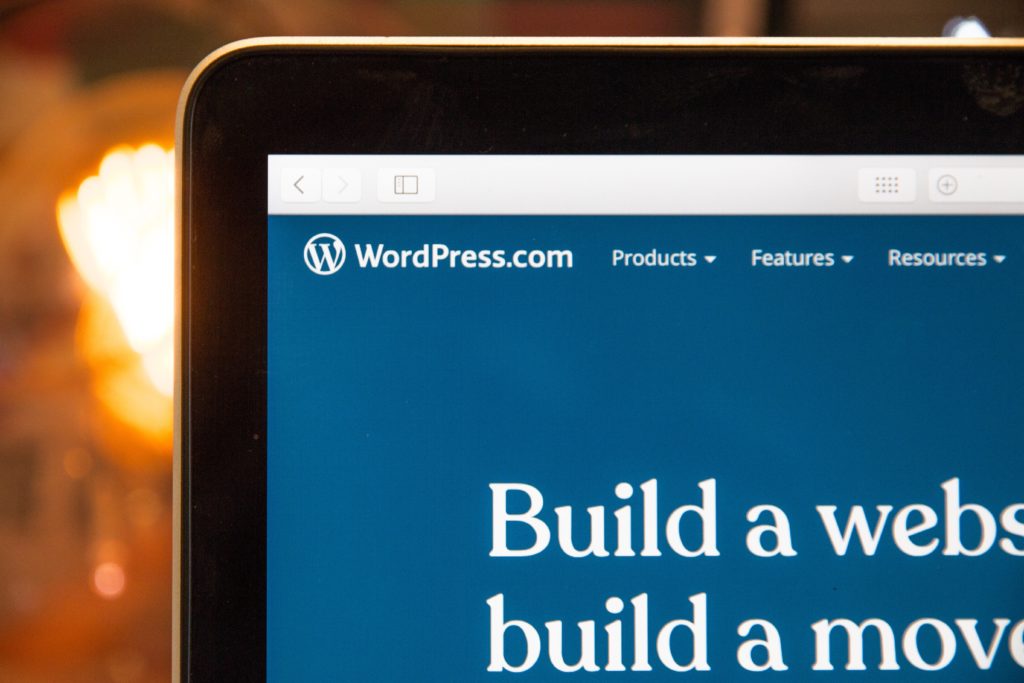When you’re starting a blog, one of the first things you need to think about is the best blogging platform for your needs.
For a long time, WordPress was the gold standard of blogging platforms. It was the only one that made sense for anyone with big dreams. However, over the years several new options have popped up and are demanding to be taken seriously. There’s no longer a one-size-fits-all solution when it comes to choosing the best blogging platform, so it’s important to carefully consider each one.
The four biggest blogging platforms out there are WordPress, Squarespace, ShowIt and Spotify. Each has its strengths and weaknesses, so the best platform for you really depends on what your goals are. Let’s get acquainted.
Disclaimer: this post may contain some affiliate links. When you make purchases through my links, I may earn a small commission at no extra cost to you. Thank you so much for your support!


Factors to Consider
When choosing the best blogging platform for you, it’s important to think about:
- How are you going to monetize your blog? If you plan to create sponsored posts and pepper affiliate links throughout your content, choose a platform that puts your blog at the forefront. However, if you want to sell digital – or physical – products, choose a platform that focuses on e-commerce. For more on monetization, check out this article.
- How big do you want to grow? If you’re content with creating a small, very niche blog then you don’t need to worry about your platform’s traffic capacity. However, if your goal is to be a big-time blogger, you’ll need a site that can cope with your legions of (future) fans.
- Are you tech-savvy? Are you willing to learn the intricacies of tweaking complicated software, or do you require something simpler and more user-friendly? The best blogging platform is one that you can actually use.


Key Terms
When it comes to blogging, there’s a lot of jargon to get your head around. Here are the basics that you should know for the rest of this article:
Domain name = the address people type in to find your website. For example, my domain name is isabellagarofanelli.com. Facebook’s domain is facebook.com. You get the idea.
Hosting = creating space for your site on the internet. Your host is the company that stores all of your website data for you.
Plugin = software that adds a specific feature to your site.
SEO = search engine optimization. This basically means making it as easy as possible for Google to find your site.


The Four Best Blogging Platforms
WordPress
WordPress is the OG blogging platform and many successful bloggers swear by it. The platform itself is free to use as you can start with a basic, free site. However, in order to monetize your blog you’ll need to purchase a domain name and hosting package. BlueHost is one of the best companies to do this with. Unless you’re skilled in web design, you’ll also want to buy a customizable theme to take your site from basic to beautiful.
There’s a lot of room for growth and customization on WordPress. You can create a site that’s as unique as you are, and grow it along with you. As your blog expands, you might require a totally new set of features on your website, which is great because with WordPress you’re not boxed in.
The main downside of WordPress is that it’s not the most user-friendly option and can be very tricky to get the hang of. However, if you’re willing to learn, there’s a wealth of information and how-to guides out there because it’s so popular.

Squarespace
Squarespace is one of the best blogging platforms out there because it’s so easy to use. It’s also an all-in-one package: you pay one fee for your domain name, hosting and use of the platform itself. This means it’s a lot simpler to set up than WordPress. Squarespace also features a drag-and-drop website builder, so creating a beautiful blog really has never been easier. You can also set up a shop with Squarespace but you’ll have to plump for their e-commerce package.
The main downside to Squarespace is that it’s not a great choice for huge websites. Its navigation features aren’t complex enough for a blog with hundreds of posts and pages, and there’s also less space for customization. If – and when – your blog really takes off, you might find that you outgrow Squarespace. If world domination is your goal, you’re better off sticking with WordPress.

Showit
Think of Showit as the lovechild of WordPress and Squarespace. It’s a drag-and-drop website builder that allows you to create your own unique site with ease, so that you don’t have to learn to code or settle for the same theme as hundreds of other bloggers. At the same time, Showit uses WordPress software meaning that you get all the benefits, such as improved SEO and bigger capacity for growth, without all the awkward trial and error that usually comes with setting up a WordPress site. It’s the best of both worlds.
So what’s the catch? The main disadvantage of Showit is that it doesn’t come with e-commerce features. It’s still possible to integrate e-commerce into your site but it requires time-consuming workarounds.

Shopify
Lastly, we have Shopify, which is a subscription software service that allows you to create an e-commerce website. The difference between Shopify and the other three platforms is that a blog is a feature of a Shopify site but it’s not the main goal. If you want to focus on blogging and earn a profit through affiliate links, then I’d recommend one of the above platforms.
However, if your plan is to make money via e-commerce, Shopify is the way to go. If you’re focused on digital products and your blog is simply a content marketing strategy through which to do that, then this is a fantastic option to consider


Pricing
WordPress
WordPress is free to use but you’re going to have to pay for a domain name and hosting services, which cost anywhere between $80-140 per year. There are free themes available, but more sophisticated options cost between $30-$80. Depending on your needs, you might also want to pay for some extra plugins.
Squarespace
Squarespace has a variety of pricing options and you can choose to pay monthly or annually (the latter secures you a discount). A limited, personal package costs $12 per month and is a good starter option. For an advanced, e-commerce site, you’re looking at $40 per month. The cost includes hosting, plugins and themes.

Showit
Showit is the most expensive platform, but I’d argue you pay for what you get. A basic blog package is $288 per year or $408 for the more advanced option. Again, there are no hidden extras such as themes, domains, plugins or security costs. It might actually save you money in the long run.
Shopify
Shopify offer a variety of pricing options depending on your needs. Most people start with the basic plan, which is priced at $29 per month. However, if you employ a huge team and have thousands of goods for sale, the $299/mo advanced plan is worth it to help you scale your business. Again, hosting is included so there’s only one fee involved.
The most important thing is that you make a decision that’s right for you and your budget. Don’t overspend, but also don’t go with the cheapest option if it doesn’t have the features that you really need to monetize and start making money through your blog. Remember, this is an investment.


Security
For security, it’s pretty much WordPress against the rest.
Shopify, Showit and Squarespace host your site on their own servers, which means that their team is always working on keeping your site safe.
When using WordPress it’s essential to ensure that you have the proper plugins downloaded to keep your site secure. It’s not rocket science, but it does take a little extra time and research. Some hosting companies also offer extra security features, which are billed monthly.


For more on blogging, why not check out my article on how to increase traffic to your blog or this guide to a successful email marketing campaign?




[…] How to Choose the Best Blogging Platform […]